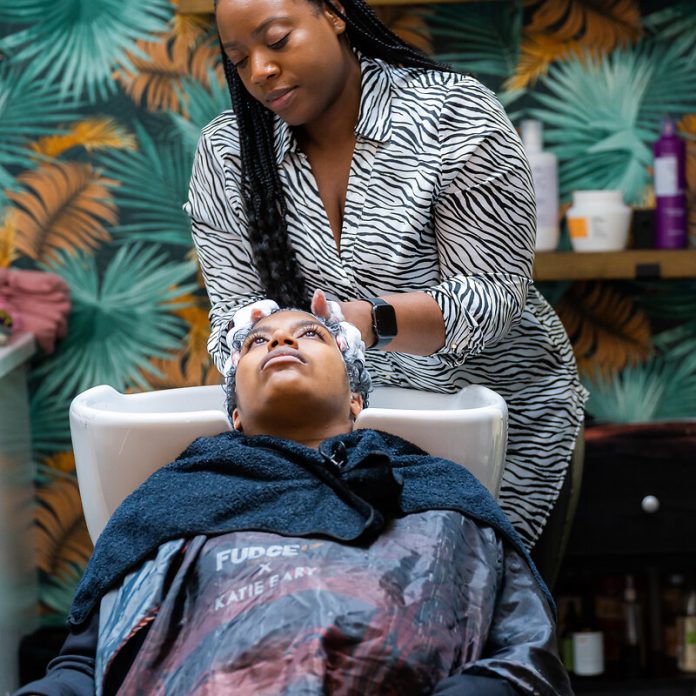Sale-based salon, The Hair Sanctuary, has launched a UK first this February with a new campaign to educate foster carers of black and mixed heritage children on the care of afro and textured hair, in collaboration with Manchester City Council.
1,371 children are under the care of Manchester’s child services according to the latest Department for Education figures, including those classed as black or mixed heritage. Some of these young people may be cared for by foster carers or residential staff from a differing background, who may not be aware of the cultural significance of afro and textured hairstyles and the necessary haircare.
As a result, this can mean the children’s natural textured hair isn’t given the appropriate protective care, including natural styling, braiding, weaving and specialised products designed for afro and similar hair, leaving children and teenagers struggling and self-conscious.
To combat this, The Hair Sanctuary Training Group, run by Naomi Brooks, an afro hair specialist, has launched the UK’s first-ever training for foster carers to educate on natural and protective hair styling for afro and textured hair, and to support black and mixed heritage children as they discover and embrace their cultural identity and appearance.
Naomi, who has more than 20 years’ experience in professional hair and beauty, explains: “We have a lot of foster carers who bring their children into the salon on a regular basis as they don’t know what to do with their hair, but understand that it’s an important part of the child’s needs.
“The more I thought about those carers, the more I realised that there must be others out there who don’t know what to do and don’t have anywhere to go. Hair is a big part of identity and culture as a black or mixed heritage person and it can be missed for children being cared for by people from different cultural backgrounds.
“In order for the children to feel connected to their culture, understand their hair and grow confidently it is so important to fill this void, which is what our courses will do.”
She added: “We also regularly hear from parents of black and bi-racial children who are finding their children are being called out at school for typical afro hairstyles designed to protect and care for their hair, including braids, canerows, bantu knots and finger coils.
“We hope that through wider education, it will be understood that these hairstyles are not breaking rules but are in fact the best way of caring for textured hair as well as celebrating cultural heritage and haircare traditions.”

Created initially for foster carers working for Manchester City Council, the course will run multiple times per year, with hands-on days in the salon to coincide with school holidays.
Councillor Garry Bridges, Executive Member for Early Years, Children and Young People, Manchester City Council, said:
“We always want to do the very best we can for our children and young people, we hope this bespoke training for our foster carers will help our young people feel better supported to be themselves and that it will make a positive difference to them.”
The Hair Sanctuary unveiled the new course at its first carers event at its flagship salon in Sale this February. The course covers natural styling, protective styling and hair styles, care and maintenance and how to avoid damage or neglect to afro and textured hair.
The initial courses will be available for up to 15 people and will involve studying as well as a ‘hands-on’ element so those caring for black and mixed heritage children can take what they learn home.
The Hair Sanctuary Training Group has also simultaneously launched a new industry Academy for other hairdressers to learn about afro and textured hair, and skincare for darker skin.
Naomi concludes:
“I’m so pleased Manchester City Council have collaborated with us on this important project, and I hope that more local councils will join in the near future. My long-term aim is to educate all care providers, including foster carers and teachers, on the needs of afro and textured hair, the correct language and terminology they should use and put a stop to hair discrimination whilst creating environments that are inclusive, from homes to schools, and salons to community spaces.”







